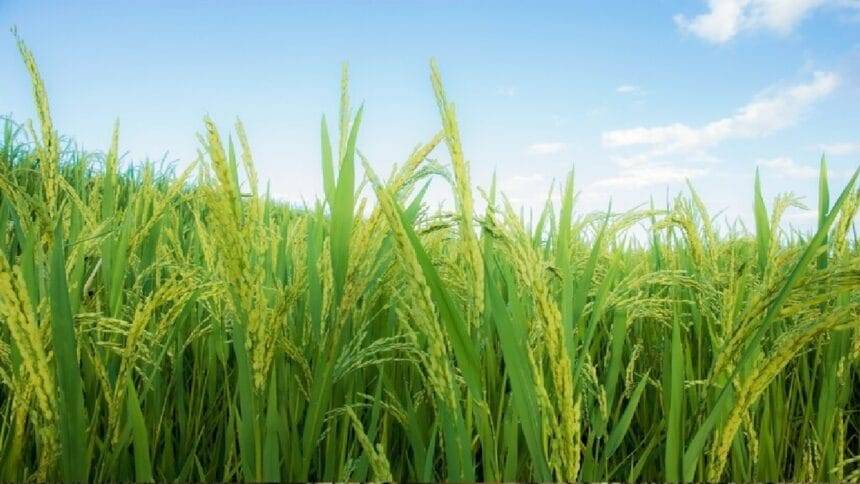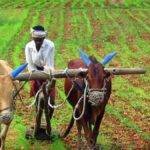Main Points In Hindi (मुख्य बातें – हिंदी में)
यहां दिए गए पाठ के मुख्य बिंदुओं का हिंदी में सारांश है:
-
लंबे धान की किस्म: नागालैंड में सबसे ऊंची धान की किस्म मिली है, जिसकी ऊंचाई 2.9 मीटर (9.6 फीट) है। विशेषज्ञों का मानना है कि लंबे पौधों की खेती करना कठिन है, क्योंकि हल्की हवा में पौधे गिर जाते हैं जिससे फसल खराब हो जाती है और किसान को नुकसान होता है।
-
किसान का योगदान: पूर्व मंत्री जेकोब झिमोमी ने बिना किसी उर्वरक के अपनी फसल उगाई, जिससे यह लंबी धान की किस्म प्राप्त हुई। कृषि विभाग की टीम इस पौधे के नमूने इकट्ठा कर उसकी उत्पत्ति और अन्य पहलुओं का अध्ययन करेगी।
-
रिकॉर्ड बनाए जाने का उद्देश्य: विशेषज्ञों का कहना है कि लंबे धान के पौधे केवल रिकॉर्ड बनाने के लिए उगाए जाते हैं और ये कृषि के लिए अनुकूल नहीं होते। ऐसे पौधे मिट्टी में गिरकर पूरी तरह से दब जाते हैं, जिससे उपज में कमी आती है।
-
बौने धान की किस्मों का विकास: विश्व भर के वैज्ञानिक लंबे धान के पौधों की समस्या को हल करने के लिए बौने धान की किस्में विकसित कर रहे हैं। ICAR और अन्य संस्थान छोटे पौधों की किस्मों पर काम कर रहे हैं ताकि उपज में सुधार किया जा सके।
- उचित ऊँचाई: धान की आपूर्ति के लिए सही ऊँचाई 100 से 105 सेंटीमीटर मानी जाती है। ICAR अब 75 से 80 सेंटीमीटर की सबसे छोटी ऊँचाई वाली किस्में विकसित कर रहा है।
Main Points In English(मुख्य बातें – अंग्रेज़ी में)
Here are the main points derived from the provided text:


-
Tall Paddy Plant Discovery: The tallest paddy variety has been found in Nagaland, specifically at the residence of former minister Jacob Jhimomi, growing to a height of 2.9 meters (9.6 feet) without fertilizers.
-
Challenges of Tall Varieties: Experts highlight that cultivating longer paddy plants is challenging because they are susceptible to wind damage, leading to crop loss and increased costs for farmers, ultimately defeating the goal of increasing farmer income.
-
Historical Context: The tallest paddy plant previously recorded was 2.5 meters (8.5 feet), grown by Melhite Kenye in Nagaland in 1998. Agriculture scientists are focused on developing shorter, more resilient dwarf paddy varieties to enhance yield and reduce risk.
-
Global Research on Dwarf Varieties: Agricultural scientists worldwide are concentrating on breeding shorter paddy plants to prevent losses from wind damage. The Indian Agricultural Research Institute (ICAR) has been developing various dwarf paddy varieties to achieve higher yields.
- Height Standards and Developments: The ideal height for paddy plants is considered to be between 100 cm to 105 cm, but initiatives like Bayer’s Arise 6444 Gold hybrid and ICAR-developed Pusa Basmati varieties aim to create even shorter plants for better agricultural outcomes.
Complete News In Hindi(पूरी खबर – हिंदी में)
नागालैंड में पाई गई धान की सबसे ऊंची किस्म के बारे में चर्चा हो रही है। विशेषज्ञों का मानना है कि लंबे धान के पौधों की खेती करना बहुत मुश्किल है। क्योंकि, लंबे पौधे थोड़ी सी हवा में गिर जाते हैं, जिससे फसल बर्बाद हो जाती है। इससे किसान का खर्च बढ़ेगा लेकिन उत्पादन कम होगा। ऐसी स्थिति में किसान की आय बढ़ाने का उद्देश्य भी विफल हो जाएगा। इसी कारण कृषि वैज्ञानिक बौने धान की किस्मों को विकसित कर रहे हैं।
यह सबसे लंबा धान का पौधा पूर्व नागालैंड मंत्री जैकब झीमोमी के घर में पाया गया। उन्होंने स्थानीय समाचार संगठन नागालैंड पोस्ट को बताया कि उन्हें खेती का शौक है, इसलिए उन्होंने धान के ओरीज़ा सटिवा बीज लाए। बिना किसी उर्वरक के, यह पौधा 4 महीनों में 2.9 मीटर यानी 9.6 फीट लंबा हो गया। कृषि विभाग की टीम पौधों के नमूने इकट्ठा करेगी और इसके मूल एवं अन्य पहलुओं का पता लगाएगी।
ओरीज़ा सटिवा का यह सबसे ऊंचा पौधा पहली बार 2005 में कोल्हापुर, महाराष्ट्र में किसान तानाजी निकाम द्वारा उगाया गया था। जानकारी के लिए बता दें कि मेहलिट केन्ये, जिन्हें नागालैंड का ‘धान आदमी’ कहा जाता है, ने 1998 में 2.5 मीटर यानी 8.5 फीट लंबा धान उगाया था। इसके लिए उन्हें गवर्नर गोल्ड मेडल मिला था। धान आदमी मेहलिट केन्ये का नाम गिनीज वर्ल्ड रिकॉर्ड में भी दर्ज है।
रिकॉर्ड बनाने के लिए लंबी पौधों की खेती
धान की लंबी किस्मों के पौधों को खोजने और उगाने के बारे में विशेषज्ञों का मानना है कि यह केवल रिकॉर्ड बनाने के लिए किया जा रहा है। क्योंकि, लंबे पौधे फसलों के लिए अच्छे नहीं होते। क्योंकि, हल्की हवा में गिरने की संभावना अधिक रहती है। धान के खेत में पानी होने के कारण गिरा हुआ पौधा मिट्टी में पूरी तरह से दब जाता है और फिर उठ नहीं पाता। इस स्थिति से पौधों में बाली का विकास रुक सकता है, जिससे धान के बीज हल्के हो जाते हैं और उत्पादन तेजी से घटता है। ऐसे किसान को अधिक लागत उठानी पड़ सकती है और उत्पादन में कमी के कारण उन्हें भारी नुकसान हो सकता है।
विभिन्न देशों के वैज्ञानिक पेड के ऊँचाई को कम करने में जुटे हुए हैं
हवा में गिरने वाले लंबे पौधों की समस्या पूरे विश्व के वैज्ञानिकों के लिए बड़ी चुनौती बन गई है, इसलिए कृषि वैज्ञानिक छोटे पौधों, यानी बौने किस्मों के विकास में जुटे हुए हैं। ग्रीन रिवोल्यूशन से पहले भी भारत में धान की व्यापक खेती होती थी, लेकिन पौधों की लंबाई के कारण फसल को अधिक नुकसान उठाना पड़ता था। इसलिए भारतीय कृषि अनुसंधान संस्थान लंबे समय से पूसा धान की बौनी किस्मों के बीज विकसित कर रहा है।
आईसीएआर बौनी किस्मों का विकास कर रहा है
आम तौर पर, धान के पौधे की सही ऊंचाई 100 से 105 सेमी मानी जाती है। लेकिन, उच्च उत्पादन के लिए भारतीय कृषि अनुसंधान संस्थान (आईसीएआर) और भी छोटी किस्में विकसित कर रहा है। एग्रीोकैमिकल कंपनी बायर ने 75 से 80 सेमी की सबसे छोटी ऊँचाई वाली हाइब्रिड धान ‘अराइज 6444 गोल्ड’ विकसित की है। आईसीएआर पूसा ने भी पूसा बासमती PB-1401, पूसा बासमती PB-1847, पूसा बासमती PB-1509, पूसा बासमती PB-1886 और पूसा बासमती PB 1728 जैसी छोटी ऊंचाई वाली किस्में विकसित की हैं।
ये भी पढ़ें –
Complete News In English(पूरी खबर – अंग्रेज़ी में)
The tallest variety of paddy plant has been found in Nagaland, after which this matter is in discussion. Whereas, experts believe that it is very difficult to cultivate longer variety of paddy. Because, tall plants fall in the slightest breeze and the crop gets ruined. This will increase the cost of the farmer but the yield will decrease. In this situation the objective of increasing the income of the farmer will also be defeated. Anyway, agricultural scientists are developing dwarf paddy varieties.
The longest paddy has been found at the residence of former Nagaland minister Jacob Jhimomi. He told local news organization Nagaland Post that he is fond of farming. That’s why he brought paddy oryza sativa seeds. Without using any fertilizer, the paddy plant grew to 2.9 meters i.e. 9.6 feet in 4 months. The Agriculture Department team will collect samples of the plant and find out its origin and other aspects.
The plant of Oryza Sativa, the tallest variety of paddy, was first grown in 2005 by farmer Tanaji Nikam in Kolhapur, Maharashtra. Let us tell you here that Melhite Kenye, popularly known as Paddy Man of Nagaland, had grown the tallest paddy variety of 2.5 meters i.e. 8.5 feet in 1998. For this he was awarded the Governor Gold Medal. Paddy Man Melhite Kenye’s name is also recorded in the Guinness World Records.
Tall plants are being grown to make records
Regarding finding and growing plants of tall varieties of paddy, experts believe that this is done only for making records. Because, tall plant is not good for farming. Because, being a tall plant, it is most likely to fall in a light gust of wind. Whereas, there is a lot of water in the paddy field, due to which the fallen plant is almost completely buried in the soil and cannot remain in a condition to rise. This condition can stop the growth of ear in it, due to which the paddy seed will not only become light but the yield will also decrease rapidly. Such farmers will incur higher costs and may have to suffer huge losses due to reduced yield.
Scientists from all over the world are busy in reducing the height of paddy.
The problem of tall plants falling in the wind has been a big challenge for scientists all over the world, due to which agricultural scientists are busy developing small varieties of paddy i.e. dwarf varieties. Even before the Green Revolution, paddy was cultivated extensively in India, but due to the longer height of the plants, there was more damage to the crop. Therefore, the Indian Agricultural Research Institute has been developing seeds of dwarf varieties of Pusa paddy for a long time.
ICAR is developing dwarf varieties
Generally, the correct height of a paddy plant is considered to be 100 cm to 105 cm. But, to achieve higher yields, the Indian Institute of Agricultural Research (ICAR) is developing even smaller varieties. Agrochemical company Bayer has developed Arise 6444 Gold hybrid paddy with the shortest height of 75 to 80 cm. ICAR Pusa has also developed short height varieties Pusa Basmati PB-1401, Pusa Basmati PB-1847, Pusa Basmati PB-1509, Pusa Basmati PB-1886, Pusa Basmati PB 1728.
Read this also –










